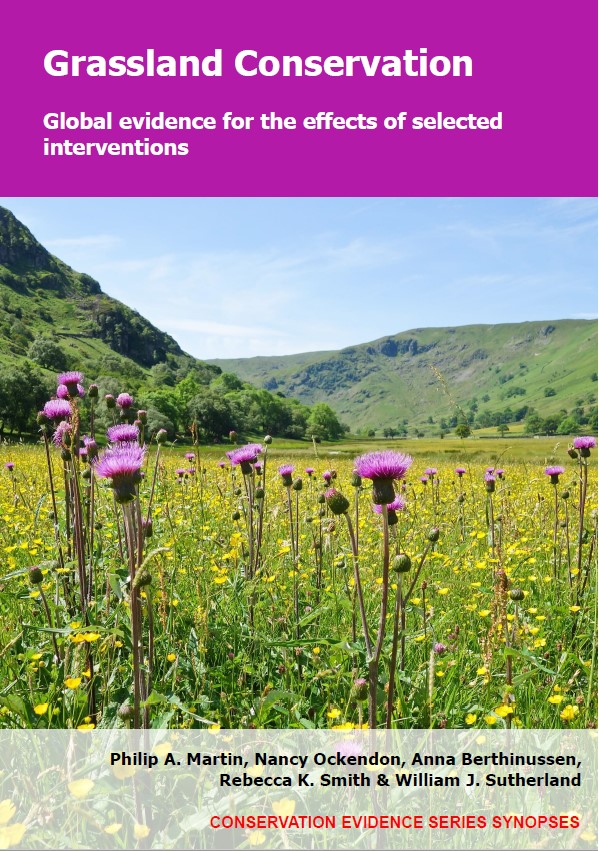Remove leaf litter before seeding/planting
-
Overall effectiveness category Evidence not assessed
-
Number of studies: 3
View assessment score
Hide assessment score
How is the evidence assessed?
-
Effectiveness
not assessed -
Certainty
not assessed -
Harms
not assessed
Study locations
Supporting evidence from individual studies
A replicated, controlled study in 2002–2004 in seven grassland sites in northern Germany (Rasran et al. 2007) found that removing leaf litter before sowing and planting had mixed effects on the number of sown ragged robin Silene flos-cuculi and marsh birdsfoot trefoil Lotus pedunculatus seedlings and the biomass of transplants. During the first year after sowing, the average number of ragged robin seedlings was higher in plots with litter removed (2–3 seedlings/plot) than in plots without litter removed (0 seedlings/plot) at two of seven sites. The same was true for marsh birdsfoot trefoil seedlings at four of seven sites (litter removed: 1–11 seedlings/plot; litter not removed: 0.1–3 seedlings/plot). After one year, the average biomass of ragged robin and marsh birdsfoot trefoil transplants was higher in plots with litter removed than without at one of seven sites and none of the sites, respectively (data not reported). There were no significant differences at any of the other sites. Two plots (1 x 2 m) within each of six blocks were established at each of seven fen-grassland sites. Two hundred ragged robin and marsh birdsfoot trefoil seeds were sown within an area (0.25 x 0.25 m) in each plot in autumn 2002. Leaf litter was removed from one plot/block prior to sowing. Four equal-sized juvenile plants of each species were transplanted to each plot in April 2003. Vegetation was monitored in each plot at the end of summer in 2003 and 2004. Biomass was sampled in August 2004.
Study and other actions testedA replicated, controlled study in 2006–2007 in five grassland restoration sites in Belgium (Piqueray et al. 2013) found that removing leaf litter, along with removing vegetation, before sowing forb seeds increased the number of seedlings for one of three sown species. For one sown species, pasqueflower Pulsatilla vulgaris, the average number of seedlings was higher in plots where litter and vegetation were removed before sowing (3 seedlings/plot) than in plots where litter and vegetation were not removed before sowing (0.6 seedlings/plot). The two other sown species, mountain clover Trifolium montanum and prostrate speedwell Veronica prostrata, did not germinate in sown plots with or without litter and vegetation removal. In May–August 2007, at each of five sites, leaf litter and vegetation were removed in four 1 x 1 m plots after which 25 seeds of Pulsatilla vulgaris, Trifolium montanum or Veronica prostrata were sown. In another four plots, seeds were sown but litter and vegetation were not removed. All sites were former forest stands that were clearcut and restored to grassland 3–14 years before the study. In May 2008, the number of seedlings in each plot was counted.
Study and other actions testedA replicated, randomized, paired, controlled study in 2008–2014 in a pine plantation burnt by wildfire in Hungary (Szitár et al. 2016) found that removing litter before sowing native grass seeds did not increase the number of seedlings or cover of either of two sown grass species compared to sowing alone. After one year, the average number and cover of Festuca vaginata seedlings was lower in sown plots where litter was removed (96 seedlings/m2, 8%) than in sown plots where litter was not removed (125 seedlings/m2, 19%). For Stipa borysthenica, after one year, the average number and cover of seedlings did not differ significantly between sown plots with litter removed (45 seedlings/m2, 2%) and litter not removed (38 seedlings/m2, 2%). In autumn 2008, two 1 x 1 m plots were established in each of twenty 3 x 3 m blocks. In one plot/block, litter was removed with a rake and seeds of two grass species Festuca vaginata and Stipa borysthenica were sown, while in the other plot, litter was not removed before seeds were sown. Cover of all plants was estimated in each plot yearly in June between 2008 and 2014.
Study and other actions tested
Where has this evidence come from?
List of journals searched by synopsis
All the journals searched for all synopses
This Action forms part of the Action Synopsis:
Grassland Conservation
Grassland Conservation - Published 2021
Grassland Synopsis





)_2023.JPG)














